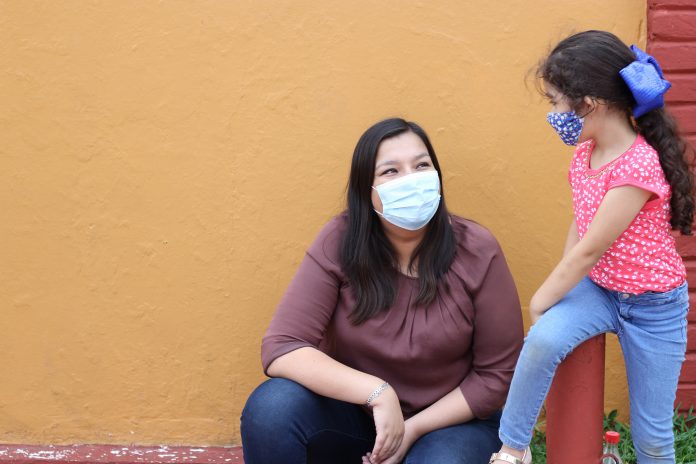Unidos En Salud organisers have now provided COVID-19 testing to 14,000 people, targeting Latinx workers – one of the most hard-hit communities in San Francisco
COVID-19 case numbers are rising in San Francisco’s Latinx community, especially among low-income essential workers. One initiative is taking charge to get medical help to this community and prevent as many deaths as possible.
Throughout the pandemic, researchers have signalled that ethnic minorities are more likely to be hospitalised and experience fatality as a result of COVID-19. This trend has been confirmed in various countries, highlighting a universal disparity in health equality.
Unidos En Salud is volunteer-led partnership between the Latino Task Force for COVID-19 (LTF), UC San Francisco , the Chan Zuckerberg Biohub (CZ Biohub), and the San Francisco Department of Public Health (SFDPH).
“Cases have been surging for weeks, and it was clear that the holiday season this year was going to present a high risk for accelerating the spread of the virus,” said UCSF infectious disease expert Diane Havlir, MD, co-Founder of the Unidos En Salud initiative.
“Rather than wait and see what would happen, UCSF and the Latino Task Force decided to respond proactively with a surge of our own, in partnership with DPH, focused on the communities where we knew the hammer was going to fall hardest.”
How did Unidos En Salud build this testing system?
Unidos En Salud launched their “Healthy Holidays” initiative in mid-November, 2020, in San Francisco’s Mission District.
Here is where they have been perfecting their community-based surveillance testing and response program and solidifying relationships with community members through the LTF since April. The initiative then expanded testing at the end of November, to three additional highly impacted neighborhoods – the Bayview, Excelsior, and Tenderloin.
“Community members I spoke with at the testing site who tested positive on rapid tests were eager to get close contacts tested out of a sense of responsibility for protecting loved ones, coworkers, and the larger community,” said UCSF infectious disease clinical fellow Luis Rubio, MD, who was part of the initiative’s clinical response team.
Following six days of intensive and strategic door-to-door community canvassing by LTF volunteers, the Healthy Holidays initiative ultimately tested more than 6800 people before and after the Thanksgiving holiday.
For all who tested positive, whether on PCR or rapid tests, LTF Community Wellness Team members followed up to connect infected individuals to support for successful quarantine, including food, cleaning supplies and referrals to resources such as city-funded isolation and quarantine hotels.
To reach as many people in affected communities as possible, regardless of symptoms or resources, the group’s low-barrier testing is not only free, but requires no reservations, no health insurance, and no identification – anyone can walk up and get tested, regardless of immigration status. Locations are also community-based and staffed in the most hard-hit neighbourhoods. Crucially, the community who are being served are also staffing and operating this testing system, which gives them unparalleled insight into the medical and social needs of this protection effort.
What about infection rates in the Latinx community?
Although just over half of those tested were Latinx, a disproportionate 79% of positive results came from the Latinx community. At the test site on St Bart Plaza, one in ten Latinx individuals tested positive for the virus.
Infection rates were also particularly high among low-income workers, including hospitality workers and day laborers, as well as among people with Indigenous backgrounds, particularly from Mexico and Central America.
The initiative found that about a third of infected individuals were asymptomatic at the time of testing and more than half were unaware of having been exposed to the virus, emphasising the need for continued vigilance in combating a disease that can spread rapidly without detection.
Havlir, who is chief of the UCSF Division of HIV, Infectious Diseases and Global Medicine, commented: “We need to be making it as easy as possible for everyone in communities most affected by the virus to get tested regularly, symptoms or no, and to get people who test positive into isolation as quickly as possible with supportive services to cut off the chain of transmission.
“This approach will continue to be critical as the new vaccines become available.”











